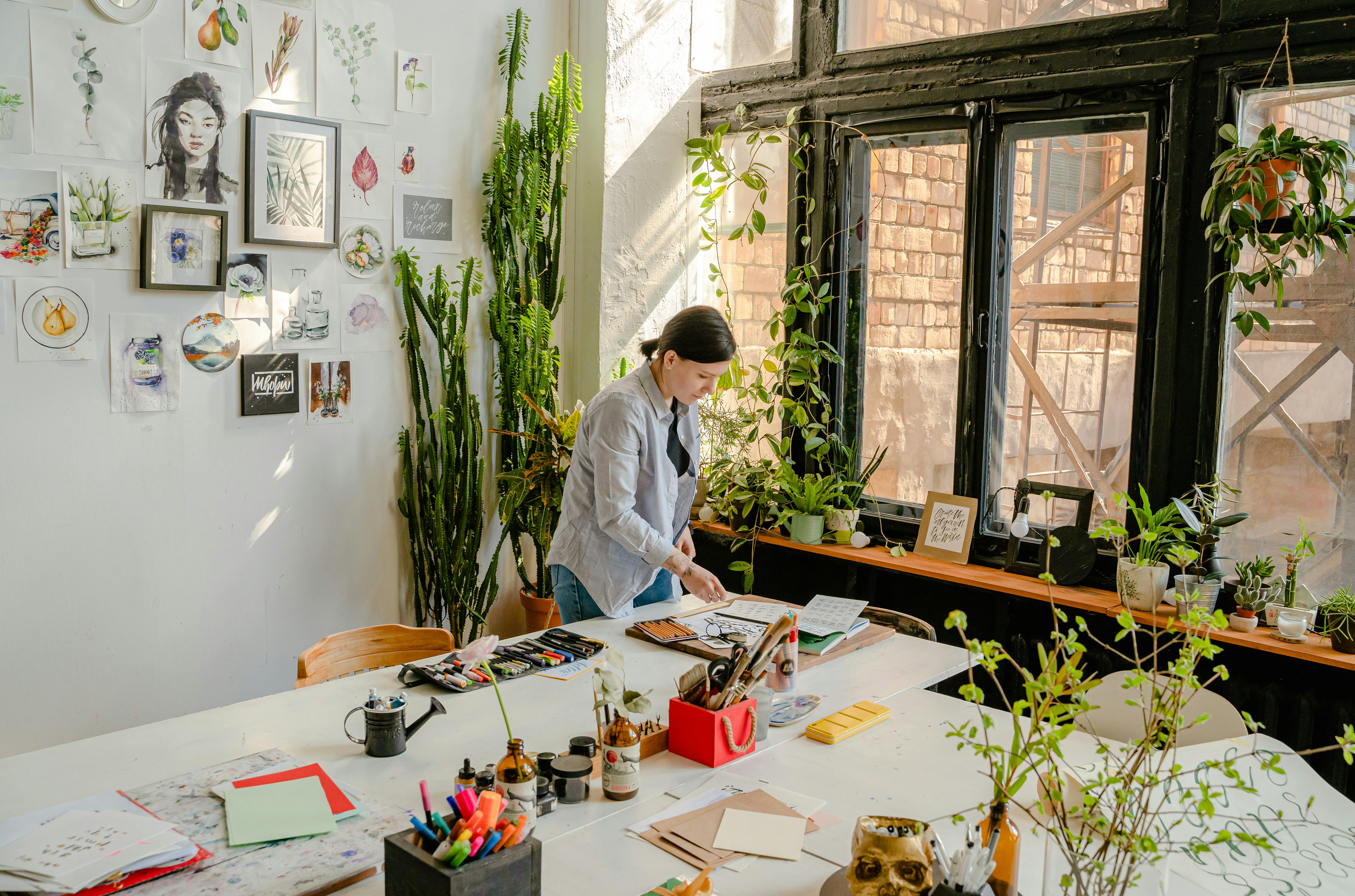
Whether you love painting, illustration, or photography, converting your passion into a career can be an incredibly rewarding move. However, it takes more than artistic skills and ambition to make it work. As a freelance artist, you have to market yourself and find clients to sustain your career. Let us look at the key steps to getting started.
1. Curate Your Portfolio
Your portfolio should showcase the best of your work, not necessarily everything you have ever created. In fact, it is better to have a small collection of top-notch pieces than a large portfolio with inconsistent quality. Choose works that represent your unique style and expertise, focusing on pieces that reflect the type of commissions or jobs you want to attract.
If you are skilled in multiple mediums, it is a good idea to include diverse works in your portfolio. Potential clients are often looking for specific skills, so showcasing a range of abilities can increase your chances of landing a variety of projects. However, do not stray too far from your core competencies—if your expertise is in digital art, focus primarily on that.
2. Build Your Website
Having an online portfolio is crucial. Many platforms can help you create a basic website without needing technical skills. Alternatively, engage a professional web developer who can create a site with eye catching designs and usability that truly showcases your personal flair. Your online portfolio will help potential clients find you and assess your work.
A beautiful website is not enough to stand out in the cluttered online world. Invest a little time in search engine optimization (SEO) with a company like Rule Your Kingdom, to ensure your site is easy to find. Be sure to add image tags with key search terms, write clear and compelling content about your work or services, and gain backlinks from relevant sites. These efforts will ensure that your site ranks higher in search results.
3. Use Social Media
Social media platforms like Pinterest and Instagram are valuable tools for freelance artists. Instagram, in particular, is highly visual and serves as a great platform for showcasing your work, building a following, and interacting with potential clients. Make sure to use relevant hashtags, post consistently, and engage with other artists and users in the comments and other posts.
Video-based platforms like YouTube and TikTok can also be effective, especially for tutorials, behind-the-scenes content, and creative vlogs that give clients a glimpse into your artistic process. The upside of creating quality content for such platforms is that you can also earn passive income through views, ads, and sponsorships, supporting your freelance work.
4. Make Connections
As with most businesses, networking is essential for finding clients. Attend local art fairs, gallery events, and community meetups to meet potential clients or collaborators. You should also join online communities, such as Facebook groups, Reddit forums, or artist collectives, to meet with fellow artists and professionals who can lead to referrals or provide useful advice.
Collaborations are a great way to expand your audience, especially if you work with artists who have an established following. On the personal front, working with others can lead to inspiration and growth that can fill your creative cup—an important part of sustaining your freelance practice long-term. Try not to confine yourself to working with artists in your own medium or style—experiment!
5. Sell on Etsy
Chances are you already have a catalog of creations available for sale. If so, consider getting an Etsy account. Etsy is one of the most popular online platforms for selling handmade and original items. Creating an account is reasonably straightforward, and you can upload products once you have registered. You can sell anything from prints to pins and even custom artwork.
Pricing your work can be tricky as a freelance artist. Be sure to factor in the cost of materials, time spent on the artwork, and shipping costs. Many artists undervalue their work initially, but as you gain a customer base, you can increase your prices. Always use high-quality images and write clear descriptions of your products and introduce any customization options.
6. Talking Business
As a freelance artist, you are also a business owner—which means you need to deal with the serious aspects of the work as well. Ensure you are keeping detailed records of your income and expenses. Use accounting software like QuickBooks to keep track of invoices, payments, and tax deductions. You should also protect your intellectual property by copyrighting your artwork.
Always use contracts when dealing with clients, even if they are friends. A well-written contract should cover the scope of the work, deadlines, payment terms, and any revisions the client may request. This protects both you and the client, and ensures that expectations are clear. You can find basic contract templates online or consult with a lawyer for a more comprehensive agreement.
Conclusion
Starting out as a freelance artist can be intimidating, but with determination, a strong portfolio, and good marketing, you can build a successful career. Art as a career or business is not the same as art as a hobby. The key is to remember why you started on this path and to continue to feed your passion for your craft. By doing so, you can still enjoy the work while supporting your dream.